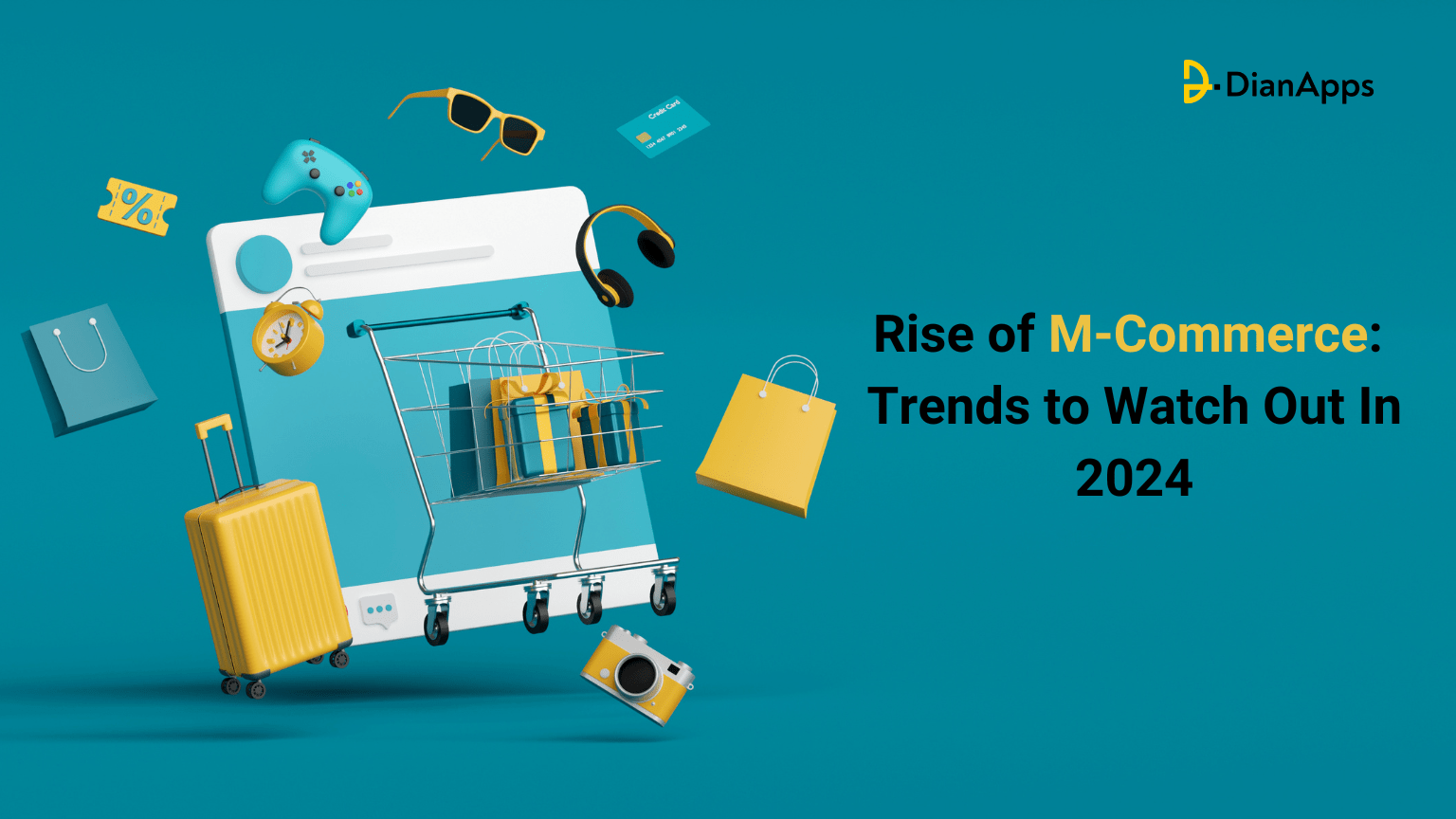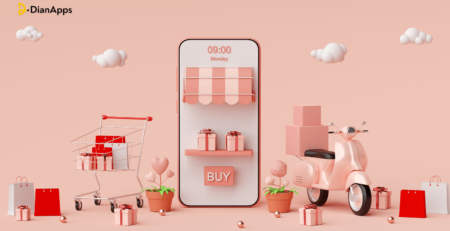Rise of M-Commerce: Trends to Watch Out In 2024
What would you do without a mobile phone? If the answer is “gone crazy or freaking out”, you’re definitely not alone.
This little device in our hands has ramped up from a mere communication tool to a life essential. From the time we are awake to the time we sleep, our phone is something that we never get away from. Be it anything from checking time and weather, using apps, paying bills reading the news, talking to our loved ones, or even shopping, what isn’t possible with a smartphone?
One such activity is mobile shopping, which is no longer a trend. Predictably three-fourths of the entire population of Earth has access to the internet by the end of 2025. On top of that, 200 million users are going to shop from their smartphones. And the fact that this is eventually going to increase as we become more addicted to using phones, for literally anything and everything. Add to that, new trends and features are getting integrated into eCommerce apps that get users hooked.
In this blog, we will be spilling those trends backed by real-life examples and facts that can redefine the way we shop in 2024.
So, let’s begin!
What is M-Commerce?
M-Commerce, short for Mobile Commerce, refers to business deals done through mobile phones or tablets. We are addicted to our mobile phones in such an irresistible way that it won’t be surprising to see the M-Commerce sector grow so fast.
eCommerce covers all online sales accessible via desktops, tablets, or any online device. M-commerce is a subsection focused specifically on mobile devices, leveraging the convenience of mobile technology for shopping.
The main advantage of M-Commerce is simplicity. It streamlines shopping by making everything accessible and manageable on your mobile device, reducing the hassle of browsing over multiple platforms.
Key Benefits of M-Commerce for Business

1. Fast Transactions
In eCommerce development services, speed is crucial. M-Commerce boosts sales by providing fast, efficient purchasing, like One-Click Checkout. This feature lets customers quickly find and buy products on their mobile phones, whether they’re on a bus, in a park, or at a store. Simplifying the payment process and reducing steps increases mobile conversions and improves user experience.
2. Better Customer Data
Mobile eCommerce lets businesses easily collect valuable data like name, location, email, and buying history through integrated analytics. With a good budget and quality app, this data becomes rich and useful. M-Commerce offers powerful analytics tools, giving modern retailers an edge in understanding and targeting their users better than traditional eCommerce platforms.
3. Effective Marketing Opportunities
Most phones have location services, allowing businesses to use location-based personalization and ads to connect with customers and boost conversions. This can be combined with in-store incentives, helping customers find nearby stores. M-commerce also enhances marketing reach through platforms like Klaviyo, enabling 24/7 SMS and email notifications that drive immediate transactions, offering a unique marketing advantage.
4. Seamless Shopping Across Channels
Mobile searches can guide customers from web stores to physical locations or complete transactions via calls. M-commerce ensures a seamless experience across all touchpoints, meeting customer expectations for convenience. Today’s shoppers use a mix of social media, apps, email, browsers, live chat, and in-store visits, making M-commerce a perfect fit for multichannel marketing growth.
5. Diverse Payment Methods
Offering various payment options in your eCommerce development solutions is crucial, especially as many are accessible via mobile phones. Options like contactless payments, Apple Pay, and one-click solutions denotes that many people prefer using their phones for transactions. M-commerce naturally fits this trend, enhancing convenience for those already using mobile payments.
6. Expanded Business Opportunities
M-commerce not only appeals to current mobile users but also targets new customers, especially Millennials and Gen Z, who expect modern mobile shopping platforms. Anyone accessing your website or app can be converted into a customer. As time progresses, the importance and influence of m-commerce will only grow.
M-Commerce Trends to Watch out in 2024

- Voice Commerce on the Rise
Voice commerce, or V-commerce, uses Virtual voice assistants are no longer just for browsing the internet or checking news. This year, they will become part of shopping apps, making shopping easier for customers.
Using this feature goes beyond searching for products. Customers can add items to their cart, explore different categories, and more with voice commands.
According to a study by Adobe involving 400 business leaders, over 90% are ready to invest in this technology.
Initially, digital product brands are likely to adopt this technology first, followed by other industries. While it may be a big step for smaller businesses, larger companies implementing it in their apps will make it easier for everyone to follow this trend in the coming year.
-
Effortless One-Click Payments
Mobile phones offer safe and easy ways to pay, and more shoppers are buying directly from their phones. You can make transactions faster and safer by using contactless payments or biometric authentication.
Before exploring new trends, support multiple international payment apps like PayPal, Stripe, and various other options like credit and debit cards, cryptocurrencies, and installment payment solutions. One of the best checkout options is Shop Pay.
Shopify Checkout with Shop Pay works well on both desktop and mobile. It boosts conversions by up to 50% compared to guest checkouts and is at least 10% faster than other quick checkout options.
-
Social Commerce Gains Attention
Social commerce is different from eCommerce because customers can buy directly through social media apps like Facebook, Instagram, TikTok, Snapchat, WeChat, YouTube, Twitch, and X (formerly Twitter).
Social commerce can be very effective. For example, during a test on Pinterest, users showed 70% more interest in buying products from product pins than from regular pins.
Brands like Sephora, MAC, Levi’s, and Natori use social media to create shopping posts, live product reviews, and quizzes to engage their audience. They saw big increases in organic traffic, ad spend returns, purchase intent, and sales from social media marketing. Additionally, a good user-generated content strategy can boost your social media efforts.
If you choose a social media funnel instead of in-app purchases, make sure you have a fast, efficient mobile app.
-
Personalized Shopping with Zero-Party Data
Consumers are very conscious of security and privacy when shopping. They are cautious about sharing personal data and accepting cookies.
Forrester defines ‘zero party data’ as information that consumers willingly give to brands. This can include email addresses, phone numbers, birth dates, purchase intentions, demographic details, product feedback, communication preferences, interests, hobbies, and habits.
-
Augmented and Virtual Reality in Everyday Use
Even if you’re not tech enthusiast, you’ve likely heard of virtual reality and augmented reality. After becoming popular in gaming, AR/VR app development services are now entering the mobile commerce market.
Many big companies use AR to enhance their app users’ experience, especially in home décor. AR lets customers see any product in their home virtually, reducing doubts that people may have while shopping for the product and ultimately minimizing the chances of returns.
While mobile commerce hasn’t fully adopted AR and VR yet, this year looks promising for these technologies to enhance shopping apps.
During the pandemic, Balenciaga sent fashion insiders VR headsets for a virtual fashion show, letting them feel like they were actually there. Ikea also launched a free iOS app, ‘Ikea Place,’ which allows shoppers to visualize products in their space, automatically scaling items to fit.
-
Live-Streaming Shopping Experiences
Live-stream shopping is the latest trend after unboxing videos.
Live shopping lets consumers buy products during a live session. eCommerce brands can address questions in real time and offer exclusive deals and limited-time offers.
You can also use live shopping for product launches, AMAs, and building a community to support your brand.
-
Enhanced Mobile Shopping Accessibility
A study reveals a fact that 67 percent of consumers prefer using a mobile app over a mobile website.
Mobile apps make it easier for your community and customers to shop.
Scott Vinkle, an accessibility expert at Shopify, says, “App designers and developers should always include accessibility best practices.”
With a retail app, shoppers can easily find product information, buy items, and track orders. Apps also allow customers to get notifications about new products, services, or promotions.
For people with disabilities, using technology and the internet can be hard. It’s important that mobile apps and websites are easy to use and browse.
You may also like to read: 10 Reasons Why You Need an eCommerce Mobile App
-
Virtual Marketplace Applications

Marketplace apps like Walmart, Temu, and eBay are the leaders in mobile commerce and sets a big trend for both consumers and retailers. For instance, Amazon’s mobile app is the top shopping app on Google Play (and second on Apple’s App Store), used by 98 million people monthly. It allows smaller businesses to boost sales by selling through the platform.
These apps are popular for several reasons:
- Wide Audience: They reach a huge global audience that prefers shopping on mobile, giving retailers access to more customers instantly.
- Easy-to-Use Mobile Features: The apps have simple, advanced interfaces that make shopping seamless. Retailers can benefit without needing complex tech skills.
- Trustworthy: These platforms are trusted for secure shopping, which boosts customer confidence.
Overall, using these marketplace apps helps retailers and appeals to mobile shoppers looking for convenience and security.
-
Integrated Omnichannel Strategies
An effective omnichannel strategy in retail means combining traditional online shopping with physical stores and mobile platforms like apps or social media. This integration ensures customers have a consistent and smooth shopping experience across all channels. Retailers using this approach are finding that customers are more reliable and will probably spend more.
Mobile app development services play a crucial role in omnichannel strategies. They provide optimized interfaces that are easy to use, personalized content based on customer preferences, targeted marketing campaigns, and help build stronger relationships with customers.
For example, push notifications sent through apps have a high open rate of 27.6% and often lead to purchases, showing their effectiveness in direct communication with customers.
Best Practices for Integrating M-Commerce into Your Business
1. Leverage User-Generated Content
User-generated content (UGC) leads to 29% higher conversion rates than campaigns without it. About 70% of brands find UGC helps them connect better with customers on social media, making it one of the best ways to build trust.
Most brands use UGC by encouraging hashtags and reviews, but simply reposting UGC is a short-term strategy.
A unique example is Sperry, which features UGC content with mutual promotion. Their ambassadors wear Sperry shoes while promoting their own initiatives. This shows inclusivity and authenticity to customers.
Best practices for UGC in mobile commerce:
- Display a shoppable UGC gallery on your mobile store.
- Create UGC-based shoppable posts on social platforms with product stickers.
- Ask for UGC in post-purchase communications once customers have experienced your product.
2. Use Chatbots to Increase Transactions
Many marketers recommend using chatbots, but only 9% of online stores worldwide have them. Even when used, chatbots often provide dull, scripted responses that don’t help shoppers effectively.
A unique example is Instagram’s new feature allowing shoppers to pay through Direct Messages. This simplifies the buying process by keeping everything in one app.
Use buttons instead of just “Yes/No” options for easier communication. Include a menu option so customers can restart the conversation if they need different information or want to adjust their orders.
3. Identify the Best Social Media Platforms for Your Business
While online brands know social media is powerful, they often need to be more balanced across all platforms. It’s better to focus on the ones that work best for your brand.
A unique example is ErgoDox EZ, which uses Reddit to build a community. Their subreddit, r/ErgoDoxEZ, lets loyal customers share keyboard setups and fun posts like cats on keyboards.
Enhance your social media presence and use it for customer service to resolve issues. Give your accounts a unique personality, like the Magnum Twitter account that engages fans with fun, behind-the-scenes, and music-related posts.
4. Collaborate with Micro Influencers to Build Trust
Influencer marketing is popular, but it has its own cons. Many brands compete for the same influencers, making it hard to win over others.
Benefit Cosmetics offers a unique example. They blend gaming and beauty by hosting gamers who love beauty on their Twitch channel. This helps them reach a new audience and create interesting marketing content.
To find the right micro-influencers for your mobile commerce store, choose those with 10k-100k followers relevant to your industry. Offer them unique discount codes and track performance. Ask them to make videos about how your product solved a problem for them. This strategy can boost your brand’s credibility and sales.
5. Stay Updated on Trends
Trends change rapidly, and people spend around 147 minutes daily on social media. Shoppers are always aware of new trends, so brands must know which trends to use and when.
Aerie has a unique approach by mixing pop culture and user-generated content (UGC). For example, with Taylor Swift’s current tour, Aerie noticed many of their customers are fans and created social media posts showing products related to the concert.
Use trending topics in your content, like song lyrics as post captions. With social listening tools and short quizzes, you can understand your audience’s interests and the current trends they follow.
6. Ensure Your Mobile Commerce Store is Inclusive
Inclusive marketing ensures brands cater to everyone, promoting diversity and accessibility. However, consumers are now cautious of brands that only use inclusivity for profit.
Rare Beauty, owned by Selena Gomez, supports mental health through its Rare Impact Fund. UK retailer Space NK pledged to donate 1% of sales to this fund.
Use closed captions in videos for shoppers who are hard of hearing. These diverse visuals showing different races, genders, ages, abilities, and sizes. Avoid stereotypes by featuring real stories and diverse individuals, like Google’s Black Girl Magic campaign celebrating real Black women.
Last Thoughts
M-commerce is the future, and having a mobile-friendly presence is now essential for brand credibility, customer satisfaction, and increased sales. Keeping up with this trend is crucial now and will become even more important as m-commerce continues to grow in significance. In order to get any of these trends integrated into your apps, it is best to hire a professional company like DianAppps that offers best-in-class eCommerce development solutions to attract more traffic to your app/website.




